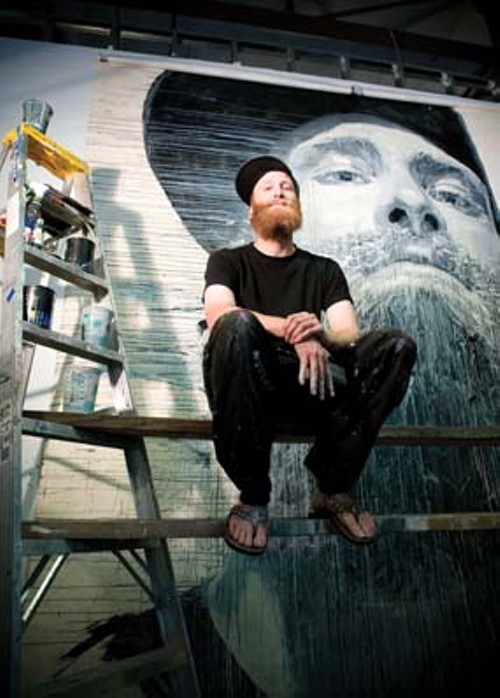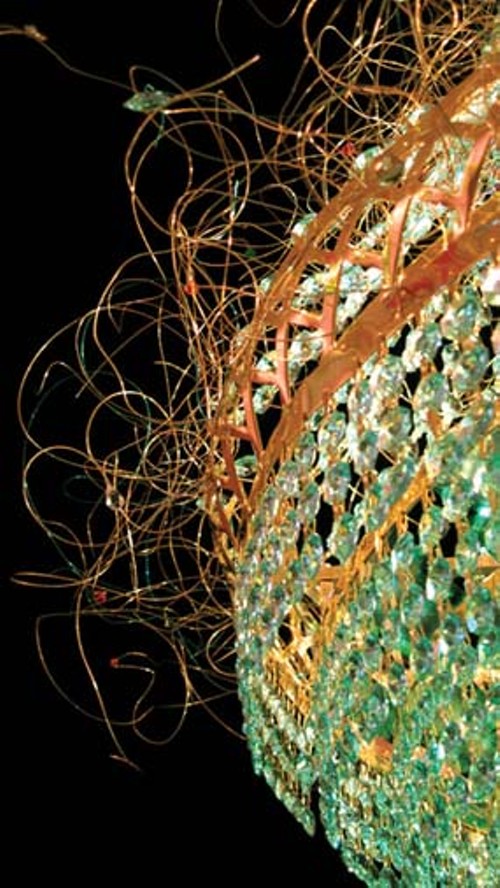Page 2 of 5
Salt Lake Art Center and a missionThis talk of unity is fine, but who will lead the charge to unify, and will they encounter resistance? Skeptics fear the worst. A widespread communication breakdown has the artistic community in isolated groups operating in oddly parallel universes. Artists spar with one another, with institutions and patrons. Their frustrations stem partly from the way the scene is set up:n
Commercial galleries tend to favor “traditional” artworks—landscapes, portraits, Western-themed jewelry … nothing too shocking. Because ... they sell. Up-and-coming or experimental artists gravitate toward nontraditional venues, from independent music and bookstores, to coffee shops and select galleries or alternative nonprofits recognized for taking risks. Sometimes, artists simply throw their art up on public spaces where the canvas allows for spontaneous, uninhibited—if illegal—creativity.
Ostensibly, the Salt Lake Art Center exists somewhere in the middle of the spectrum. The center is not a commercial gallery. It is not a museum. It is an institution dedicated to showcasing contemporary artwork. For 76 years, its staff has worked valiantly to assert the center’s importance.
“I think the perception of Utah by generally everyone who has not visited Utah is that, ‘You just have Mormons there,’” says Roni Thomas, director of media relations for the center. “You don’t have culture, you don’t have music, you don’t have film, you don’t have mountains, you don’t have skiing—you have Mormons!’ People are so close-minded about things. I just shrug it off and say, ‘Well, it’s your loss.’"
Thomas adds that she’d never assume any other town outside of New York City or San Francisco is, by default, less interesting or less cosmopolitan. Besides, she says, people who have visited the center are beginning to spread the word about recent exhibitions, including last summer’s Life After Death: New Leipzig Paintings From the Rubell Family Collection. “We had a piece here by Neo Rauch that hadn’t been shown anywhere in the world—in the world! That’s pretty impressive.”
Beyond typical out-of-state naysayers, the center contends with longstanding obstacles in its own back yard.
“Contemporary art in Salt Lake City as a whole is not as well accepted or recognized as an art form that people want to get involved with,” Thomas says. “The culture is more attuned to the performing arts than it is to visual arts, across the board—not just contemporary, but contemporary takes another turn. It’s something that people aren’t as comfortable with because they look at it and say, ‘Well, I don’t get it. It makes me uncomfortable. It makes me have to think about something,’ and sometimes people don’t want to do that.”
Thomas acknowledges Salt Lake City has changed quite a bit since 1931, significantly so after the 2002 Olympic Winter Games gave the town a much-needed ego boost.
The Salt Lake Art Center has also changed, most recently with the October departure of director Ric Collier. His replacement, Heather Ferrell, takes over in mid-July. Collier was instrumental in the center’s signing on with 337 and, with Adam Price, helping conceptualize Present Tense while the original project was still in progress.
By many artists’ accounts, 337 was the first time in recent memory the center went out of its way to connect with them.
“I think stagnation is the perfect word for it. I think they didn’t know how to overcome it,” says Trent Thursby Alvey, a prominent Utah artist whose sculptural work is among the Utah Museum of Fine Arts’ permanent collection. Her piece in the original 337 tackled Utah’s history of nuclear testing and helped inspire the multimedia art installation, Exposed.
Alvey believes 337 highlighted certain fundamental flaws in the system. “Everyone knew there were things broken with the community. I don’t know if you recognize them as being broken when you’re in it, but after, you go, ‘Wow, that was really screwed up.’ I just don’t think the artists felt they were welcome.”
Alvey considers Present Tense a perfect opportunity for the center to re-examine its priorities. “They need to figure out how to access people, how to get people into the space,” she says. “With the show, it will bring in a whole bunch of people who haven’t been there in a while. It will be a whole, fresh kind of work that artists can relate to. And since they’re bringing their 337 experience with them, they’ll already be open-minded about what they’re going into, whereas before it was, ‘Maybe I shouldn’t go in there because it’s too esoteric. Maybe we don’t understand the artwork in there.’”
Collier left the center after 11 years at the helm to resume an art-making career that had collected dust for three decades. He says the visual-art community was broken long before he took over:
“I came into a situation that was pretty bankrupt—I believed at the time I arrived the center didn’t like artists, it didn’t like community, it didn’t like a lot of things. Today, I don’t think it’s quite like that.”
More by Jamie Gadette
-
The Moths
Salt Lake City's The Moths breathe life into Necromancy
- Apr 22, 2015
-
Best of Utah 2014 Photo Booth: Photo Collective (part 3)
- May 13, 2014
-
Best of Utah 2014 Photo Booth: Photo Collective (part 2)
- May 13, 2014
- More »
Latest in Cover Story
Readers also liked…
-
Forget the family pedigree—Robert F. Kennedy Jr should not be the next president of the United States
Trojan Horse
- Jun 21, 2023
-
Women decry harassment and toxic culture at St. George auto dealership
Men at Work
- Oct 11, 2023






